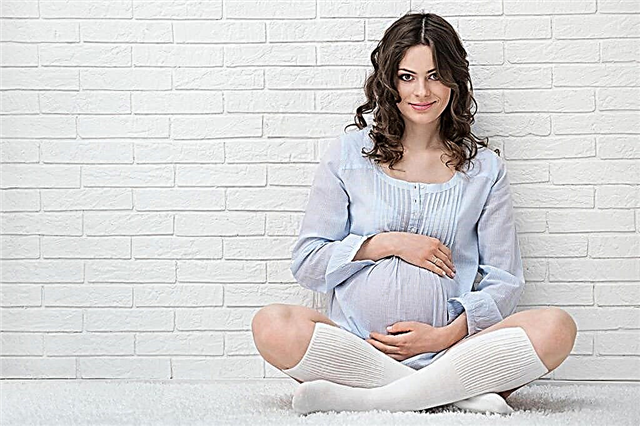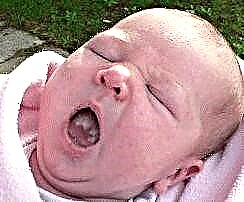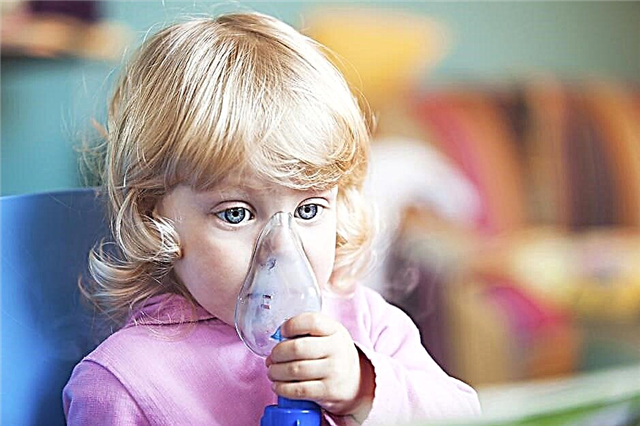Recently, high blood pressure has become a problem not only for the elderly, but also for the child population. According to the Ministry of Health of the Russian Federation, there is an increase in the number of children with arterial hypertension. By 2010, this figure was 7%. Arterial hypertension in adolescents is a special topic, as it requires correction and work of the nervous system in connection with hormonal changes.
Our article will allow you to find out everything about blood pressure, why it rises in children, and most importantly - how to solve this problem.
Hypertension and its causes
1. Increased pressure on the background of endocrine diseases:
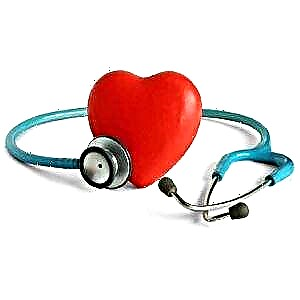 excess of hormones produced by the thyroid gland;
excess of hormones produced by the thyroid gland;- adrenal tumor;
- Itsenko-Cushing's syndrome;
- overweight;
- diabetes.
2. With kidney disease:
- with congenital underdevelopment of the kidneys;
- kidney injury;
- hydronephrosis - a congenital kidney disease in which it begins to accumulate fluid;
- narrowing of the renal vessels, or their blockage (thrombosis);
- tumors that produce hormones similar to those of the kidney.
3. Taking medicines:
- nasal drops with a vasoconstrictor effect with congestion;
- hormonal drugs, including contraceptives;
- anti-inflammatory non-hormonal drugs.
4. With vegetative dystonia in adolescents.
5. During menstruation, girls have increased pressure numbers.
6. With congenital heart defects (narrowing of the aorta).
Blood pressure measurement rules
Types of tonometers:
 manual;
manual;- electronic;
- semi-electronic.
Personal experience!The choice of the tonometer is based on personal priorities. The disadvantages of electronic blood pressure monitors are that they are very sensitive and can distort true values. Personally, I prefer fully manual blood pressure monitors.
Pressure measurements should be:
- in a warm room, in a comfortable environment;
- an hour after breakfast, coffee or tea, and preferably in the morning on an empty stomach;
- when the child is completely relaxed;
- in silence and with the correct body position (you cannot cross your legs, talk, laugh).
It is better to measure the pressure while lying down, on both hands in turn. Ideally, there should be three measurements on both hands. The difference between the right and left hand is normally about 5-10 mm. rt. Art.
Choosing the right cuff
In pediatric practice, it is necessary to have several types of cuffs. They differ in width.
| Up to a year | 2.5 cm |
| 1-3 years | 5-6 cm |
| 4-7 years old | 8-8.5 cm |
| 8-9 years old | 9 cm |
| 10-13 years old | 10 cm |
How to measure pressure?
- The cuff must be applied to the shoulder so that the rubber tube is above the ulnar fossa and is 2 cm higher than it.
If you have a hand-held blood pressure monitor, then you need to check the cuff so that there is no excess air in it.
- The phonendoscope should be positioned in the cubital fossa.
- Then we blow air with a rubber bulb until the arrow reaches 140 - 150 on the tonometer dial.
- We slowly release the air, and the pulse that you hear first will be the number of systolic pressure. Accordingly, the last pulse is the diastolic pressure figure.
With electronic blood pressure monitors, everything is easier. Plugged in or inserted the batteries, pressed the button, and that's it. The tonometer will do everything for you. Only during the measurement with an electronic tonometer you can not talk, laugh, which is very difficult for babies.
To accurately determine the pressure, it is important to measure it on the legs. The pressure on the legs is always lower than on the arms. The measurement principle is the same, only it is done on the thigh and in the popliteal fossa.
Blood pressure norms in children
There are special tables that are compiled on the data of measuring pressure among a certain population. The gradation in this table is by height, age, gender.
The average normal value is defined within the 90 - 95th percentile. This means that the majority of children in the population of this particular height of sex and age had exactly this figure of pressure.
Accordingly, everything above the 95th percentile will be considered arterial hypertension.
In tall children, as a rule, the pressure always tends to the figures of 120/80 mm. Art., at the same time in stunted and thin blood pressure tends to decrease - 90/60. Of course, this is due to the constitutional features of the vascular system.
Symptoms of arterial hypertension
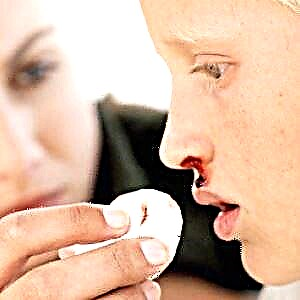 accidentally, on examination by a pediatrician or at home, a child is found to have high blood pressure when measured three times. In addition to this symptom, nothing else may bother you;
accidentally, on examination by a pediatrician or at home, a child is found to have high blood pressure when measured three times. In addition to this symptom, nothing else may bother you;- headaches against the background of increased blood pressure;
- nosebleeds;
- dizziness, nausea, lightheadedness;
- fatigue, exercise intolerance;
- pallor of the skin.
- a sharp gain in body weight or a leap in growth.
Personal experience!At the reception was a young man, 17 years old. Throughout the year, he is worried about high blood pressure up to 170/80, headaches, nausea in the morning. Was diagnosed with arterial hypertension of 1 degree. Treatment was prescribed, control after 3 months, blood pressure was kept at 120-130 / 80 mm Hg. Art. The cause of hypertension is not clear.
Diagnostics
- clinical analysis of blood, urine;
- biochemical analysis. Necessarily blood sugar and cholesterol;
- determination of calcium in the blood;
- assessment of the hormonal background of the thyroid gland;
- electrocardiography;
- ABPM is the main method for diagnosing arterial hypertension. This examination is carried out during the day. A portable tonometer is attached to the child. The child is with him all day and night. Throughout the entire time, the device measures the pressure every 15 minutes. After a day of this examination, the doctor evaluates the results. According to the results of the examination, if 50% or more of the time, increased pressure figures are recorded, then a diagnosis of arterial hypertension is made.
- Ultrasound of the heart;
- Ultrasound of internal organs, kidneys, adrenal glands.
Folk remedies
Sedatives to relieve nervous excitement:
 sage;
sage;- hawthorn;
- St. John's wort;
- valerian;
- pion;
- motherwort;
- chokeberry;
- mint, lemon balm.
Diuretic herbs:
- lingonberry;
- Birch buds;
- bearberry.
Herbs with a vasodilating effect:
- viburnum;
- hop cones;
- barberry;
- hawthorn.
In ancient times, there was a doctor who cured a patient with high blood pressure with the help of grapefruit juice, which he drank a glass a day.
These herbs can be drunk as fees. They are prescribed for 2 weeks.
Herbs should be brewed with boiling water and taken 1/3 cup 2 times a day. Sedatives are best used before bed.
In pediatric practice, it is better to use infusions and liquid extracts. Tinctures are not recommended as they contain alcohol.
It is also recommended to include diuretic teas for kidney diseases.
The effect of herbal medicine usually occurs after a month of admission. But you should systematically repeat the courses of taking herbal preparations to stabilize the effect of lowering the pressure.
Principles of non-drug treatment
- In children and adolescents, treatment should begin with a correction of the work and rest regimen, which includes 8 hours of sleep at night, walking in the fresh air for 2 - 3 hours a day, limiting the use of a computer, TV and phone to 1 hour.
- Physical activity is mandatory - skiing, cycling, jogging, outdoor games, swimming.
- Morning exercises daily.
- Creation of comfortable conditions in the family and school, in kindergartens.
- Exclusion of smoking, alcohol in adolescents.
Antihypertensive drugs under the influence of nicotine reduce their effectiveness by 2 times.
- Restriction of sports only with arterial hypertension of the 2nd degree.
Physiotherapy procedures
Their action:
- sedation;
- lowering blood pressure;
- relaxation of the vascular wall.

You can use procedures such as galvanization, electrophoresis, electrosleep. Physiotherapy is selected individually by a doctor.
Massage of the neck area is also great for relieving muscle spasms due to prolonged sitting. Especially useful for school children.
Drug therapy for arterial hypertension
- Treatment of arterial hypertension with antihypertensive drugs is carried out only after confirmation of the diagnosis by ABPM.
- The choice of the drug is made individually.
- Treatment begins with a minimum dose; if the effect is insufficient, the dosage can be increased.
- You should start with one drug. It is advisable to use a drug with a duration of action up to 24 hours in children.
- Evaluation of the effectiveness of treatment is carried out after 2 months.
- The minimum duration of treatment is 3 months.
Groups of drugs:
- calcium channel blockers: Nifedipine, Amlodipine, Plendil;
- angiotensin-converting enzyme inhibitors. The drugs used for initial therapy are Enalapril, Lisinopril, Kapoten;
- beta-blockers - Atenolol, Metoprolol, Bisoprolol;
- diuretics are used for overweight, usually in combination with other groups of drugs. Representatives are Indapamide and Furosemide.
A drug for the treatment of hypertension in children should be prescribed only by a doctor in the required age dosage;
- nootropic agents for improving memory, blood circulation in the brain - Pantogam, Cerebrolysin, Cavinton. They also do an excellent job of relieving headaches.
Important!
When the pressure rises above 150/90, it is necessary:
- give the child valerian or motherwort, wait 10 - 15 minutes. If ineffective, go to the second point;
- give the drug Nifedipine 10 mg 1 tablet, it is possible under the tongue;
- if ineffective, call an ambulance.
Prevention
- it is very important to conduct conversations in schools with parents about the elimination of bad habits among adolescents. Smoking, drugs, alcohol can lead to the development of arterial hypertension;
- it is also necessary to conduct conversations about a healthy lifestyle. Children should know "from the cradle" that the sun, air and water are our best friends;
- the correct diet is the key to health.
Should be included in the menu:
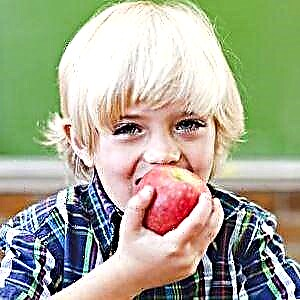 fermented milk products, milk;
fermented milk products, milk;- vegetables fruits;
- potassium. Its sources are beans, peas, prunes, raisins, dried apricots.
You should also limit the consumption of table salt to 1 teaspoon per day. Better to use iodized salt.
Requires weight normalization with restriction of caloric intake, exclusion of flour products, sweets, confectionery.
Children with reduced activity are at risk. Regular physical activity reduces myocardial oxygen demand, increases fitness, improves mood, and reduces excess weight.
Important! With arterial hypertension loads are contraindicated:
- weight lifting - powerlifting;
- all kinds of struggle.
Average physical activity for boys is 7-12 hours, for girls - 4-9 hours per week.
Labile arterial hypertension
This conclusion can be seen when the pressure rises periodically. This usually occurs in emotionally labile teenagers. The nervous system becomes imbalanced due to hormonal changes during puberty, hence failures in normal pressure numbers occur. To exclude true arterial hypertension, a number of the above examinations should be carried out.
Blood pressure in adolescents may tend to rise and be considered normal. Especially with the emotional lability of a child in adolescence. In this case, it is necessary to keep a blood pressure diary for 10 days - measure the pressure in the morning and evening, write it down in a notebook. These records must be shown to the cardiologist.
And most importantly, do not prescribe antihypertensive drugs to your child on your own. First of all, you need to find out the cause of the increased pressure, and then eliminate it.

 excess of hormones produced by the thyroid gland;
excess of hormones produced by the thyroid gland; manual;
manual; accidentally, on examination by a pediatrician or at home, a child is found to have high blood pressure when measured three times. In addition to this symptom, nothing else may bother you;
accidentally, on examination by a pediatrician or at home, a child is found to have high blood pressure when measured three times. In addition to this symptom, nothing else may bother you; sage;
sage; fermented milk products, milk;
fermented milk products, milk;